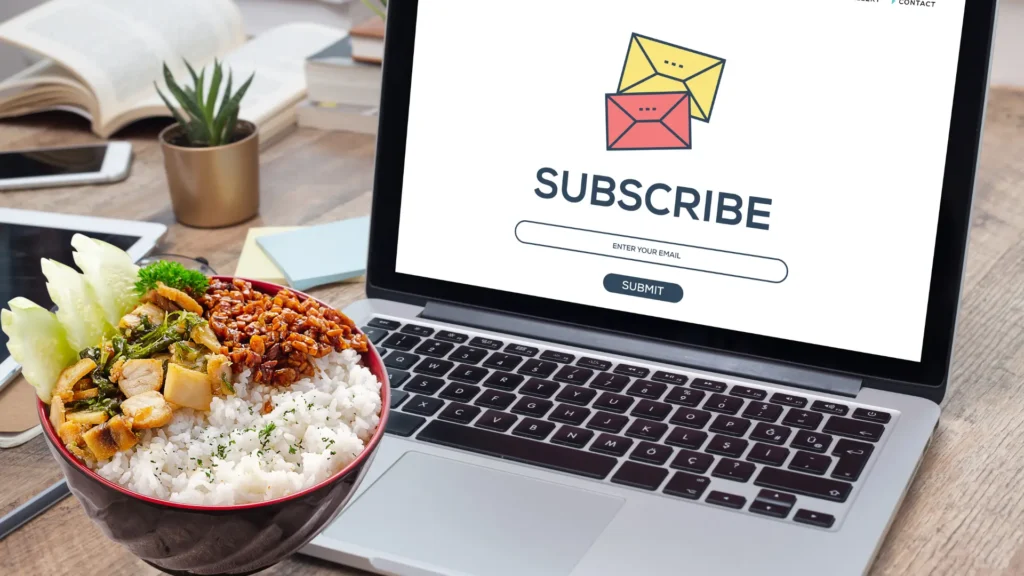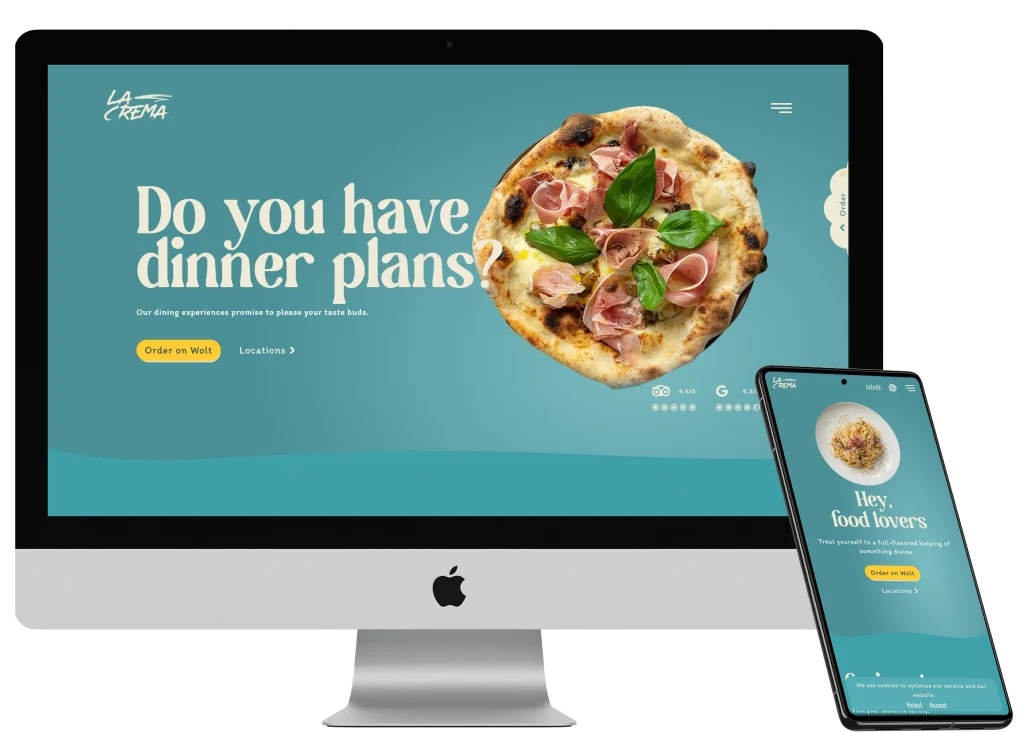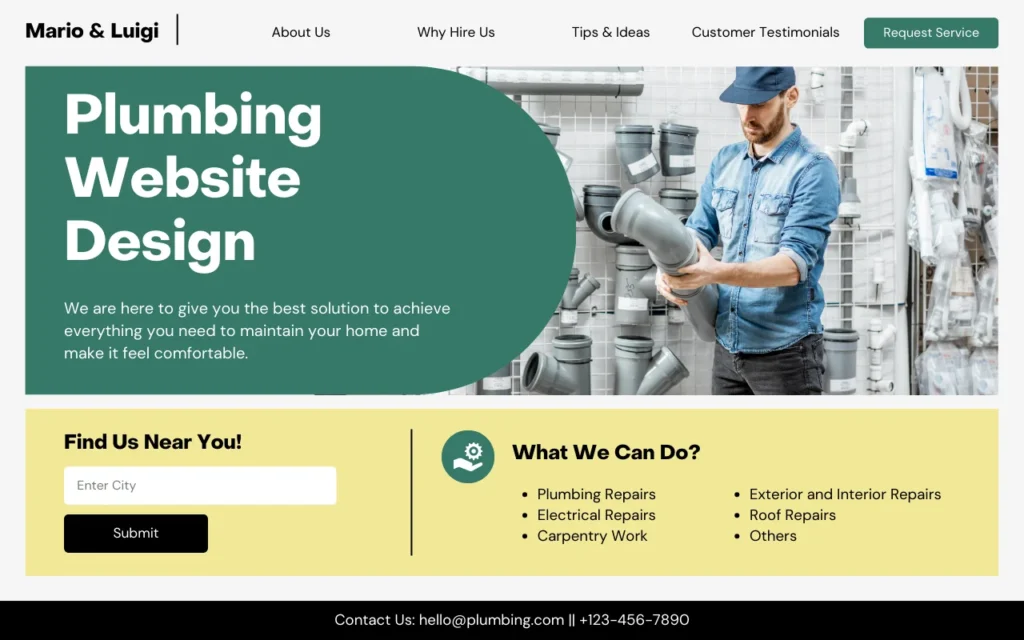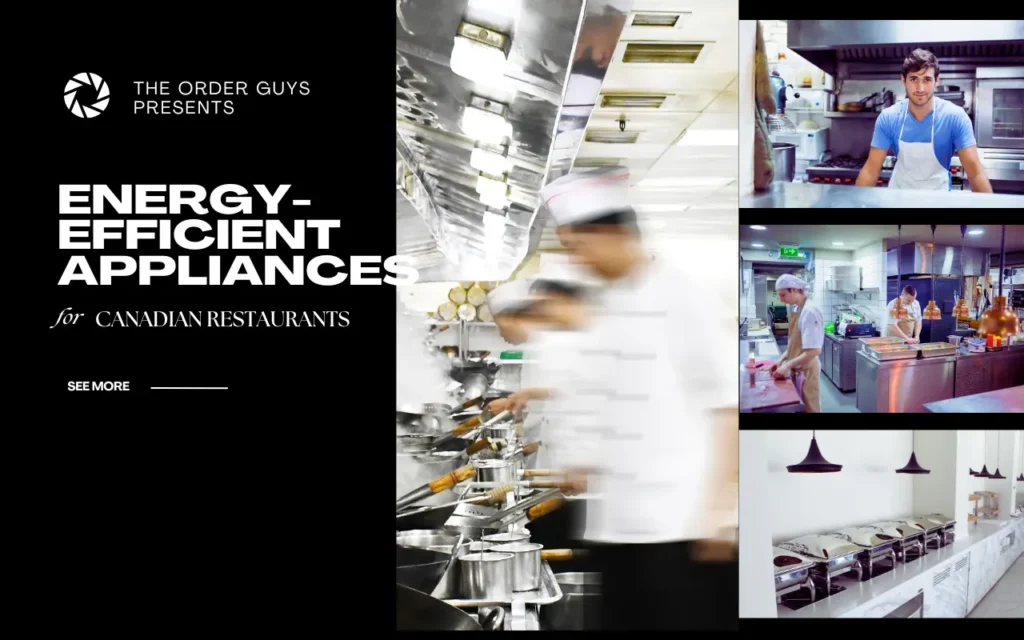Dining at your restaurant can begin long before customers step through your doors; it all starts with building a strong relationship with your email subscribers. In this guide, you will learn valuable strategies to transform your email list into a loyal customer base, ensuring your subscribers turn into repeat guests who not only enjoy your culinary offerings but also promote your brand. By understanding effective email marketing techniques, engaging content, and personalized communication, you can create a seamless journey from initial touchpoint to loyal patronage.
Understanding Your Audience
A critical step in converting your email subscribers into loyal customers is to thoroughly understand your audience. This means going beyond just knowing their names or email addresses. Truly understanding your audience involves plunging into the demographics that define who they are, which can play a pivotal role in how you communicate with them. The more you know about your subscribers, the better equipped you are to tailor your messages, promotions, and even your product offerings to meet their needs and preferences.
Identifying Subscriber Demographics
The foundation of understanding your audience lies in identifying their demographics. This may include aspects such as age, gender, location, income level, and lifestyle preferences. Utilizing forms on your website to collect this data, as well as analyzing the information you already have, will offer valuable insights. Once you’ve compiled this information, you can begin to create detailed customer personas that represent your ideal subscribers, helping you to communicate in ways that resonate with them.
Maintaining awareness of these demographics can also inform your content strategy and product offerings. For example, if you find a significant segment of your subscribers is leaning towards a specific age group, you can develop targeted campaigns that speak directly to their interests and needs, making your email communications more effective.
Analyzing Subscriber Behavior
While identifying demographics is an important first step, analyzing subscriber behavior will provide even deeper insights into their preferences and habits. Monitoring how your subscribers interact with your emails—tracking open rates, click-through rates, and engagement metrics—can reveal patterns that help you figure out what content resonates best. For instance, if a segment of your audience frequently clicks on offers related to dining experiences, you know that this is a valid area to explore when crafting future promotions.
While behavior analysis might seem more complicated than demographic identification, it is equally important. You should regularly review analytics tools that help you assess trends over time, and that can highlight seasonal buying patterns or particular events that drive engagement. This consistent analysis will enable you to refine your messaging and improve your future outreach efforts.
Subscriber behavior tells you not only what they’re interested in, but also how often they engage with your content. This means understanding their specific actions—be it sharing your emails, visiting your website after reading a newsletter, or following you on social media. By systematically tracking these behaviors, you can personalize your marketing strategy to effectively nurture your subscribers into loyal customers.
Segmenting Your Email List
Subscriber segmentation is a powerful technique that involves dividing your email list into smaller groups based on specific criteria, such as demographics, behavior, or preferences. By categorizing your subscribers in this way, you can deliver tailored content that aligns with their unique interests and needs. This targeted approach not only enhances the relevance of your communications but also significantly increases engagement rates and conversions.
Implementation of segmentation strategies can be done based on email interactions or purchasing behavior, and you can create segments for the new subscribers, frequent purchasers, and even for those who have lapsed in their engagement. By addressing each group with personalized messages, you ensure that each communication feels relevant and engaging, ultimately guiding them closer to a purchasing decision.
A well-segmented email list allows for more effective targeting, which could range from sending specific promotions to a loyal customer segment to crafting unique content for subscribers who have shown interest in particular areas of your offerings. Implementing varied approaches based on segmented lists can significantly improve your conversion rates and foster loyalty among your customers.
Creating Engaging Email Content
If you want to turn your email subscribers into loyal customers, engaging content is crucial. Not only does it grab their attention, but it also fosters a connection that encourages them to take action. Here’s how to create compelling email content that resonates with your audience and drives conversions.
Crafting Compelling Subject Lines
One of the first things your subscribers will see is the subject line, making it a critical element of your email. To ensure that your emails are opened rather than ignored, you should employ strategies that evoke curiosity or a sense of urgency. For example, consider using numbers, questions, or even a dash of humor to pique interest. A well-crafted subject line can significantly increase your open rates, which is the first step in engaging your audience.
Additionally, avoid using spammy language or excessive punctuation, as these can lead to your emails landing in the dreaded junk folder. Testing out different styles and tones can give you insights into what resonates best with your subscribers, allowing you to refine your approach over time.
Personalization Techniques
An effective way to enhance engagement in your emails is through personalization. Utilizing your subscribers’ names, previous interactions, and preferences can make your messages feel more tailored, thereby increasing the likelihood of a positive response. For instance, referencing past purchases or suggesting products based on their browsing history can create a uniquely personalized experience that shows you value their individual needs.
The beauty of personalization lies in its ability to build trust and loyalty. When subscribers feel recognized and appreciated, they are more likely to become long-term customers. By employing data analysis tools, you can segment your audience and craft personalized messages that cater to specific groups, ensuring that your content resonates with each reader.
Incorporating Storytelling
An engaging way to captivate your subscribers is by incorporating storytelling into your emails. People naturally gravitate towards narratives, and sharing your brand’s story can connect them on an emotional level. Whether it’s highlighting your team’s journey, customer success stories, or even behind-the-scenes glimpses, storytelling can transform mundane promotional content into something relatable and engaging.
Subjecting your brand experience to storytelling not only sets you apart from competitors but also helps convey your values and mission. By illustrating how your products or services positively impact people’s lives, you foster a sense of community and belonging, which is important in nurturing loyal customers.
Designing Effective Calls-to-Action
Despite the technical prowess behind designing effective email strategies, the true power lies in your calls-to-action (CTAs). These elements transform passive engagement into active participation, guiding your subscribers from merely reading your content to making valuable commitments, such as exploring your menu or reserving a table at your restaurant. Getting this critical piece right can significantly enhance your conversion rates, so it’s crucial to focus on clarity, urgency, and relevance in your CTAs.
Importance of Clear Messaging
One of the first steps in crafting compelling CTAs is ensuring that your messaging is clear and concise. When your subscribers see an invitation to take action, they should immediately understand what you’re asking them to do and why it benefits them. Use simple language and be direct—this approach helps eliminate any confusion, making it easier for your audience to follow through on your request.
Furthermore, your CTAs should create a sense of urgency. Incorporating phrases like “Limited Time Offer” or “Reserve Your Spot Now” can encourage your subscribers to act quickly. Do not forget, clearly articulated benefits combined with an urgency-driven message not only strengthen the effectiveness of your CTAs but also cultivate a feeling of necessity among your audience.
A/B Testing for Optimization
Some of the most successful marketing strategies for restaurants involve continuous testing and learning, and A/B testing your CTAs is no exception. By creating two variations of your CTA—such as different text or colors—you can measure which one performs better. Pay close attention to metrics like click-through rates and conversions to understand what resonates most with your subscribers.
Messaging is pivotal during A/B testing because the wording you choose can drastically change how engaged your audience feels. Even minor tweaks, such as adjusting the verb from “Get” to “Claim,” can elicit different responses. By systematically testing these variations, you glean insights that can be applied to refine your messaging in future campaigns, ultimately leading to better conversion rates.
Placement Strategies
Clearly, the placement of your CTAs within your email is just as important as the design and messaging. You want to ensure that they are strategically located where your subscribers can easily see and act on them. This might mean placing some CTAs near the beginning of your email, as well as at the end, to capture different reader segments—that way, no matter when a subscriber engages with your content, a CTA is always within reach.
For instance, you might consider using a floating CTA that remains visible as readers scroll through your email, or placing it adjacent to compelling content, such as an enticing dish description or a testimonial about a dining experience. By experimenting with different placements, you can not only improve visibility but also enhance the overall user experience, which can contribute to conversion and loyalty growth.
Leveraging Exclusive Offers
Keep your subscribers engaged and excited by offering exclusive deals that cater to their preferences. By creating a sense of exclusivity, you can incentivize them to not only open your emails but also to make a purchase. Exclusive offers can take many forms, and it’s crucial to tailor these offers to suit your audience’s interests and consumption habits. Effective offers can convert subscribers into loyal customers, enhancing their overall experience with your brand.
Types of Offers to Consider
Exclusive deals come in various formats that can effectively engage your email subscribers. Here’s a list of types of offers you might want to consider:
- Member-only discounts
- First-access to new products
- Complimentary items with a purchase
- Special invitations to events
- Seasonal promotions exclusive to subscribers
Perceiving these offers as a reward for their loyalty can elevate subscriber satisfaction and encourage repeat visits to your establishment. When done right, these exclusive promotions can serve as a powerful tool in your marketing strategy, leading to improved conversion rates and long-term customer relationships.
| Type of Offer | Description |
| Member-only discounts | Discounts available solely for email subscribers. |
| First-access to new products | Subscribers get to shop new items before the general public. |
| Complimentary items | Free items offered with a qualifying purchase. |
| Special invitations | Exclusive invites to product launches or tastings. |
| Seasonal promotions | Offers linked to holidays or seasons, creating a sense of urgency. |
Timeliness and Urgency in Promotions
Even the best offers become dull if they are not delivered with a sense of urgency. Incorporating limited-time promotions can create a compelling reason for your subscribers to act quickly. To effectively instill a sense of urgency, consider using countdown timers or emphasizing that the offer is available for a limited time. This urgency not only encourages immediate action but also reinforces the feeling that these exclusive offers are highly coveted and only available to a select group.
Understanding how to wield the concept of urgency can elevate your promotional strategies. By instigating a fear of missing out (FOMO), you compel your subscribers to prioritize your offer, ultimately leading them to make a purchase. Additionally, creating limited-time experiences can foster excitement and discussions around your brand, further solidifying the relationship between you and your subscribers.
How to Use Discounts Wisely
With any promotional strategy, using discounts wisely is imperative to ensure they contribute to your overall profitability and brand image. While discounts can attract attention and drive initial traffic, they should not become the sole reason customers return. Consider using targeted discounts based on customer behavior or purchase history, which can maximize effectiveness without devaluing your offerings. Crafting discounts that reward loyal customers, rather than just acquiring new ones, ensures they feel valued and appreciated.
Timeliness is also key when considering how to deploy discounts. Rolling out discount offers in alignment with significant events, holidays, or new product launches can yield better results by capturing attention during moments when your customers are already primed to shop. Careful planning and execution of your discounts can position your brand in a way that customers not only appreciate the savings but also feel a deeper connection and loyalty to your business.
Building Trust and Credibility
Not many things can drive customer loyalty quite like trust. When your email subscribers perceive your brand as credible and genuine, they are far more likely to convert into loyal customers. Building this trust doesn’t happen overnight; it requires consistent effort and a deliberate strategy. By carefully crafting your communication and interactions, you can establish credibility that encourages subscribers to engage with your brand on a deeper level.
Establishing a Brand Voice
Clearly defining your brand voice is imperative in building trust with your audience. This voice should resonate with your subscribers and reflect your core values. Whether your tone is casual, authoritative, or friendly, make sure it remains consistent across all your communication channels, including your emails, website, and social media. This consistency not only helps establish your identity but also fosters recognition and a sense of reliability among your subscribers.
Creating a relatable and authentic brand voice will make your audience feel more connected to your messaging. To ensure your voice is well-received, consider segmenting your email list based on subscriber demographics or preferences and tailoring your content accordingly. By speaking directly to the needs and interests of different groups, you further establish yourself as a brand that genuinely cares about its customers.
Encouraging Customer Reviews and Testimonials
Now that you’ve established a strong brand voice, it’s important to leverage customer reviews and testimonials as a means of building credibility. Positive reviews not only enhance your reputation, but they also act as powerful social proof that can influence purchasing decisions. Encourage your subscribers to share their experiences with your products or services. This can be achieved through follow-up emails after a purchase or by integrating review requests into your customer journey.
Reviews can offer potential customers insights that can be much more persuasive than your marketing messages. When subscribers see genuine feedback from real customers, they’re more likely to trust your brand. Consider showcasing reviews prominently on your website and in your email campaigns, transforming satisfied customers into brand advocates. The more exposure your testimonials receive, the stronger your credibility will become.
Transparency in Communication
Even in an age where consumers are more skeptical than ever, transparency in communication goes a long way in establishing trust. Being honest and straightforward about your products, services, and policies creates a safe environment for your subscribers. Ensure that you are forthright in your messaging; if there are any promotions, terms, or conditions that may affect your customers, communicate them clearly to avoid confusion or frustration later.
Establishing transparency not only means being open about your offerings but also actively engaging in two-way communication with your subscribers. Encourage them to reach out with questions or concerns, and be responsive in addressing their inquiries. Maintaining an open line of communication fortifies your relationship with your subscribers and reinforces the trust they have in your brand.
Utilizing Social Proof and Community
Many business owners underestimate the power of social proof and community in converting email subscribers into loyal customers. By leveraging these elements effectively, you can not only enhance your brand’s credibility but also create a supportive ecosystem that nurtures relationships with your customers. When customers see their peers endorsing your products or sharing their experiences, they’re more likely to trust your brand and engage with it on a deeper level. This is a vital part of the journey from mere subscription to loyal patronage.
Building a Community Around Your Brand
Community is at the heart of any successful brand. To foster this sense of belonging, consider creating exclusive groups for your email subscribers where they can connect, share experiences, and provide feedback. This not only makes your customers feel valued but allows them to have a voice in your brand’s evolution. Hosting events or webinars tailored to your community can also elevate engagement, encouraging subscribers to transition into loyal customers who feel invested in your brand’s success.
Moreover, your community can serve as a powerful platform for user-generated content. Encourage your customers to share their experiences with your products or services and showcase these moments on your platforms. This strategy builds authenticity, demonstrating that real people vouch for your offerings. When potential customers see the thriving community around your brand, they’re more inclined to make that leap from subscribing to buying.
Engaging Customers on Social Media
While email serves as an vital communication channel, social media offers unparalleled opportunities for engagement. Your restaurant social media profiles are a dynamic extension of your brand, allowing you to foster conversations with your subscribers. Sharing not just promotional content, but also behind-the-scenes glimpses, customer shout-outs, and interactive posts can deepen relationships and encourage two-way dialogue. Regularly engaging with your followers—responding to comments, sharing their posts, or even asking for their input on new offerings—creates a sense of community and makes them feel like they are part of your brand’s journey.
With consistent engagement on social media, you can turn passive followers into active participants in your brand story. You can incentivize interactions by hosting contests, giveaways, or polls that require follower input. These interactive elements make your audience feel like they are part of something bigger and significantly increase the chances of transitioning them from email subscribers to enthusiastic customers.
Highlighting Customer Stories and Experiences
Stories are powerful. By sharing customer testimonials and experiences, you not only validate your products but also create relatable content that resonates with potential buyers. Feature these stories on your website, social media, and in your email newsletters to cultivate trust among your audience. When potential customers see how others have benefited from your offerings, they’re more likely to make a purchase, feeling confident that your brand delivers on its promises.
Highlighting customer experiences also opens up avenues for deeper storytelling. Media that showcases diverse customer backgrounds and experiences allows your audience to see themselves reflected in your brand. Use video testimonials, blog posts, or social media stories that capture the authenticity of these interactions. This not only amplifies return engagement but solidifies your brand as one that values its customers’ narratives, further enhancing your credibility and driving conversions.
Measuring Success and Driving Improvement
Now that you’ve set the foundation for converting email subscribers into loyal customers, it’s crucial to assess how effective your strategies have been. Measuring success goes beyond simply counting the number of subscribers; you need to monitor specific key metrics to truly understand your performance and identify areas for improvement.
Key Metrics to Monitor
An effective email marketing strategy hinges on several key metrics. Start by keeping a close eye on your open rates, click-through rates (CTR), conversion rates, and unsubscribe rates. Open rates provide insight into the effectiveness of your subject lines, while CTR reveals how engaging your content is to subscribers. Additionally, measuring conversion rates can help you determine how well your emails are turning subscribers into paying customers. Finally, keeping track of unsubscribe rates provides an important indicator of whether your content remains relevant and valuable to your audience.
Another important metric is the overall ROI of your email campaigns. This can be calculated by comparing the revenue generated from your email marketing efforts against the costs involved, such as software, design, and labor. By regularly assessing these metrics, you will have a clearer picture of how your strategies are performing and where adjustments may be needed.
Tools for Email Analytics
Measuring your email marketing performance requires specific tools that can provide you with the analytics needed to succeed. Many email marketing platforms come with built-in analytics features, offering valuable insights into subscriber behavior. Tools like Mailchimp, Constant Contact, and HubSpot allow you to track open rates, CTRs, and other important metrics effectively. You should also consider integrating Google Analytics to gain deeper insights into subscriber behavior once they leave the inbox and land on your website.
Monitor your email performance regularly with these analytics tools to harness the data effectively. Analyzing trends over time can help you refine your content strategies, improve targeting, and enhance your overall marketing efforts. Additionally, many of these tools offer A/B testing capabilities, allowing you to test different subject lines and email formats to discover what resonates best with your audience.
Iterating Based on Feedback
Any successful email marketing strategy will include a continuous feedback loop. Embrace feedback from your subscribers not only through surveys and polls but also through the metrics you’ve monitored. By gathering insights directly from your audience, you can identify common pain points and preferences that guide your content strategy. This can lead to more personalized and relevant emails that increase engagement and loyalty.
Iterating your strategy based on feedback ensures that you remain aligned with your audience’s needs. Don’t hesitate to experiment with different types of content, promotional offers, and audience segments. The key is to stay flexible and willing to adapt, creating a dynamic email marketing approach that keeps your subscribers engaged and encourages them to become loyal customers.
Final Words For How To Convert Email Subscribers Into Loyal Customers
The journey from simply acquiring email subscribers to transforming them into loyal customers is a multi-faceted process that requires strategic planning and continuous engagement. By understanding the unique needs and preferences of your subscribers, you can tailor your communications and offers to resonate with them personally. This involves not just sending promotional emails but creating value through informative content, exclusive deals, and incentive programs that enhance the overall customer experience. You should employ segmentation and analytics to track their engagement levels and tweak your strategies accordingly.
Ultimately, the key to converting email subscribers into loyal customers lies in establishing a genuine relationship built on trust and relevance. You can achieve this by consistently delivering on your promises, responding to feedback, and fostering community around your brand. Bear in mind, it’s not just about making a sale; it’s about creating a memorable dining experience that makes your customers want to return time and time again. By implementing these practices, you can position your restaurant as a favorite destination for your subscribers, turning casual diners into enthusiastic brand advocates.













